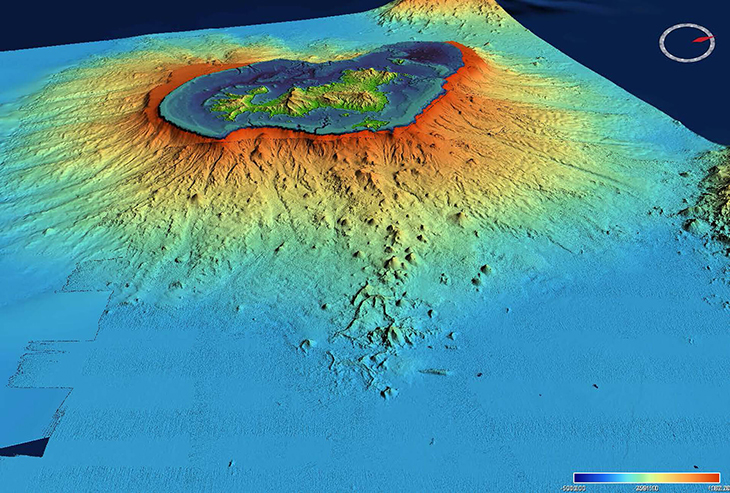
A groundbreaking new study has revealed an astounding potential for the storage of carbon dioxide within an extinct volcano situated off the pristine shores of Portugal.
This geological marvel, lying dormant beneath the ocean’s surface, has the capacity to hold an impressive range of 1.2 to 8.6 gigatons of carbon dioxide, effectively neutralizing the country’s industrial emissions for a staggering period of 24 to 125 years.
To achieve this monumental feat, scientists are exploring the innovative technique of “in situ mineral carbonization.” The process entails extracting carbon dioxide directly from the atmosphere and injecting it deep into the heart of the volcano’s subterranean chambers.
Upon penetrating the depths of this ancient volcanic structure, a captivating transformation unfolds. The CO2 encounters an intricate chemical ballet, as calcium, magnesium, and iron eagerly react with the carbon dioxide, giving rise to the formation of calcite, dolomite, and magnesite. These newly created minerals work in harmony, ensnaring the carbon dioxide within their rocky embrace for an eternity.
The choice of the Fontanelas volcano, nestled 60 miles off the Portuguese coastline, offers a myriad of advantages for this groundbreaking endeavor. Firstly, the rugged and mountainous terrain of the volcano grants unparalleled ease when it comes to drilling into its depths, setting it apart from other in situ mineral carbonization projects. Secondly, the volcanic basalt prevalent within the volcano boasts exceptionally high concentrations of iron, magnesium, and calcium, perfectly poised to facilitate the carbon dioxide capture process. Finally, the proximity of the Fontanelas volcano to the shore proves incredibly convenient, as it obviates the need for occupying precious land within the country’s borders.
In light of these compelling factors, the Fontanelas volcano emerges as an alluring prospect in the quest for sustainable carbon dioxide management. This extraordinary geological formation stands poised to revolutionize the fight against climate change, providing a natural sanctuary where this harmful greenhouse gas can find a permanent and secure abode, shielding our planet from its devastating effects.
“We know that most countries, including Portugal, are making efforts to decarbonize the economy and our human activities, this is a message that this may be one of the instruments to solve the problem,” Ricardo Pereira said. He is a geologist at the NOVA School of Science and Technology as well as the co-author of the study.
The Geological Society of America recently published a study conducted by a collaborative team of American and Portuguese scientists. By analyzing data from dredging and drilling activities conducted by seismologists and oil exploration experts, the researchers made an interesting discovery regarding the Fontanelas volcano. They found that the rocks of this volcano contained significant amounts of carbonates, indicating that natural in situ carbonization processes were already taking place.
Moreover, the rocks retrieved from the volcano exhibited a porosity of 40 percent, implying the presence of ample space for the injection of carbon dioxide (CO2).
Based on these findings, the authors propose that there are likely other underwater volcanoes that nations could potentially utilize as repositories for CO2, effectively acting as CO2 landfills.
What are your thoughts? Please comment below and share this news!
True Activist / Report a typo


